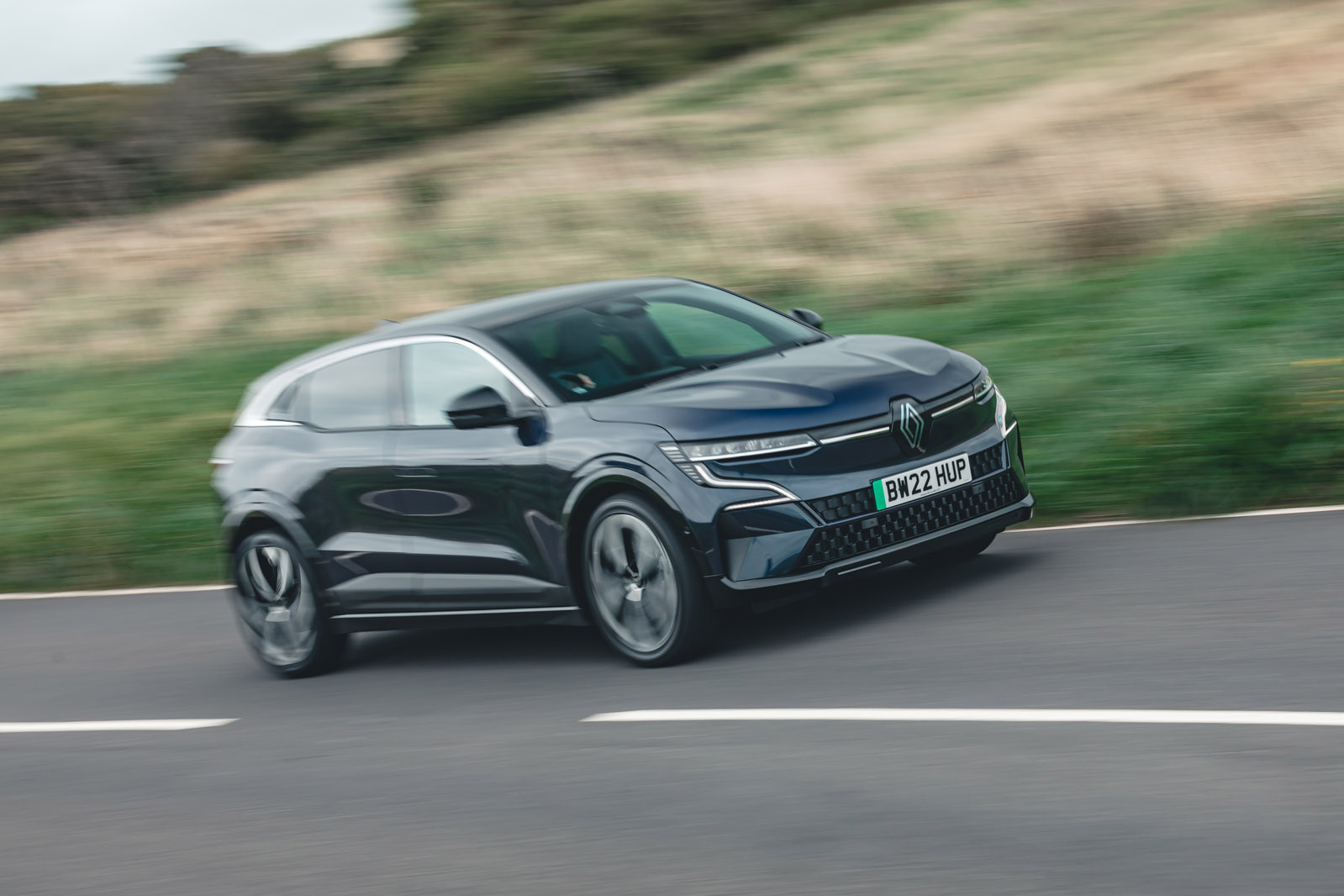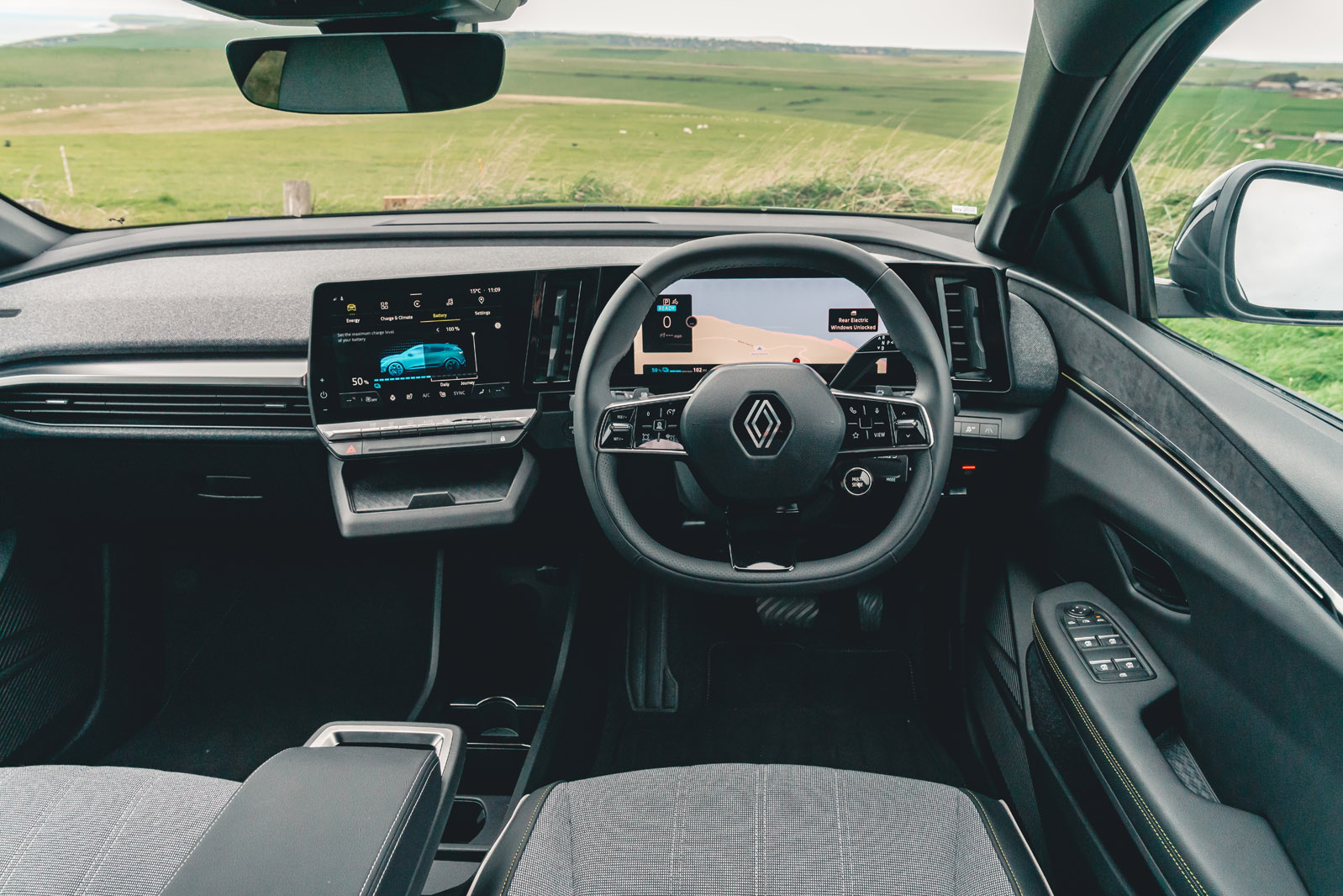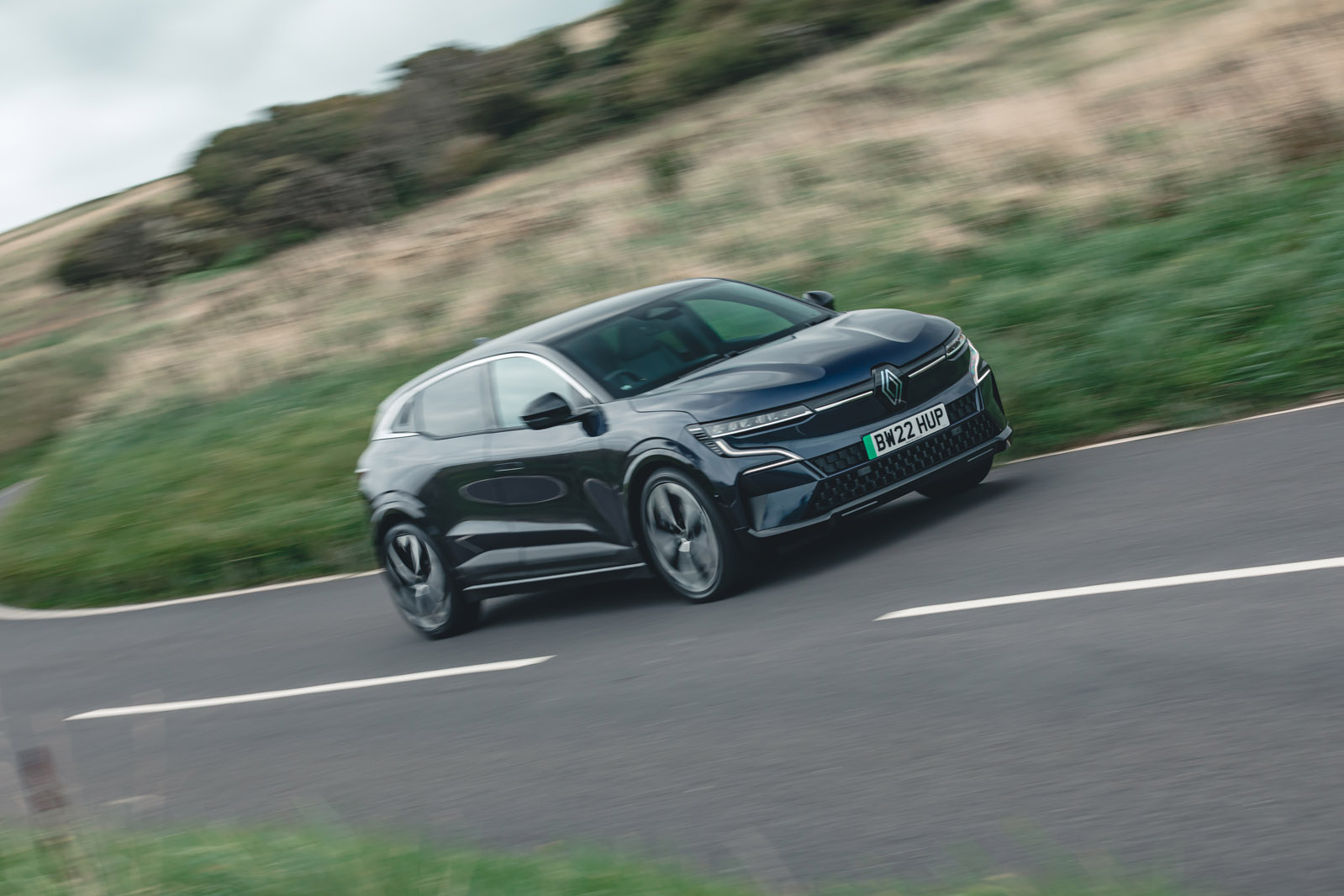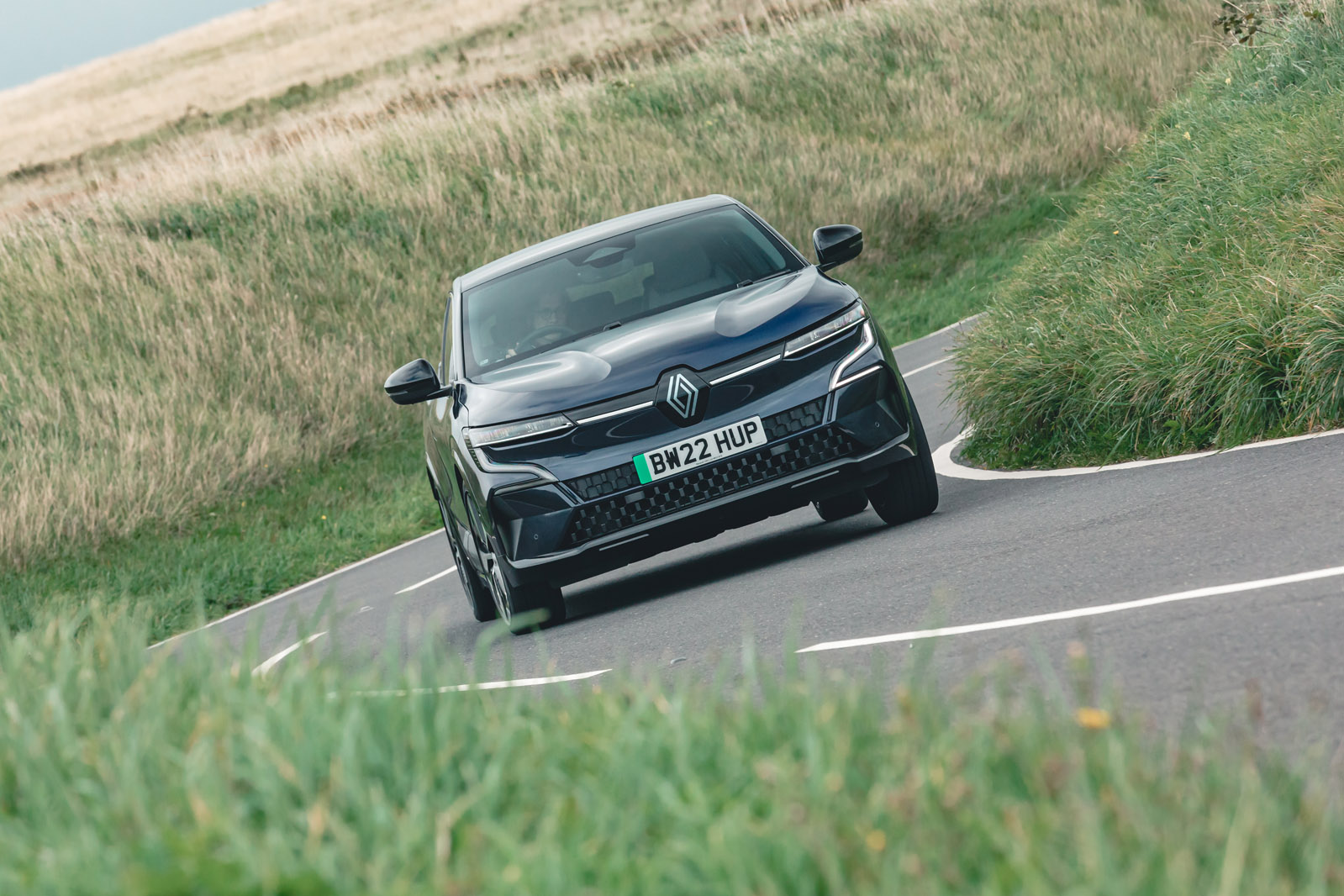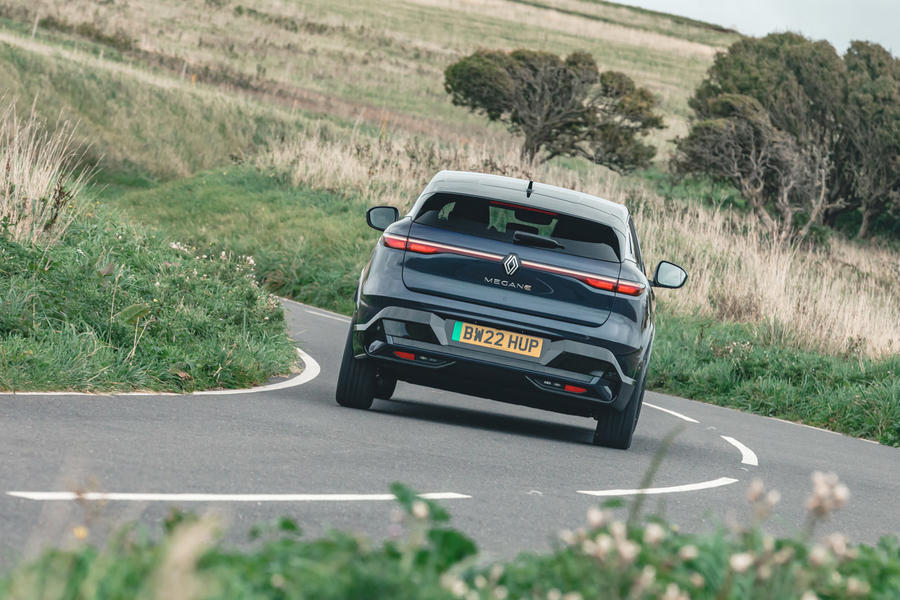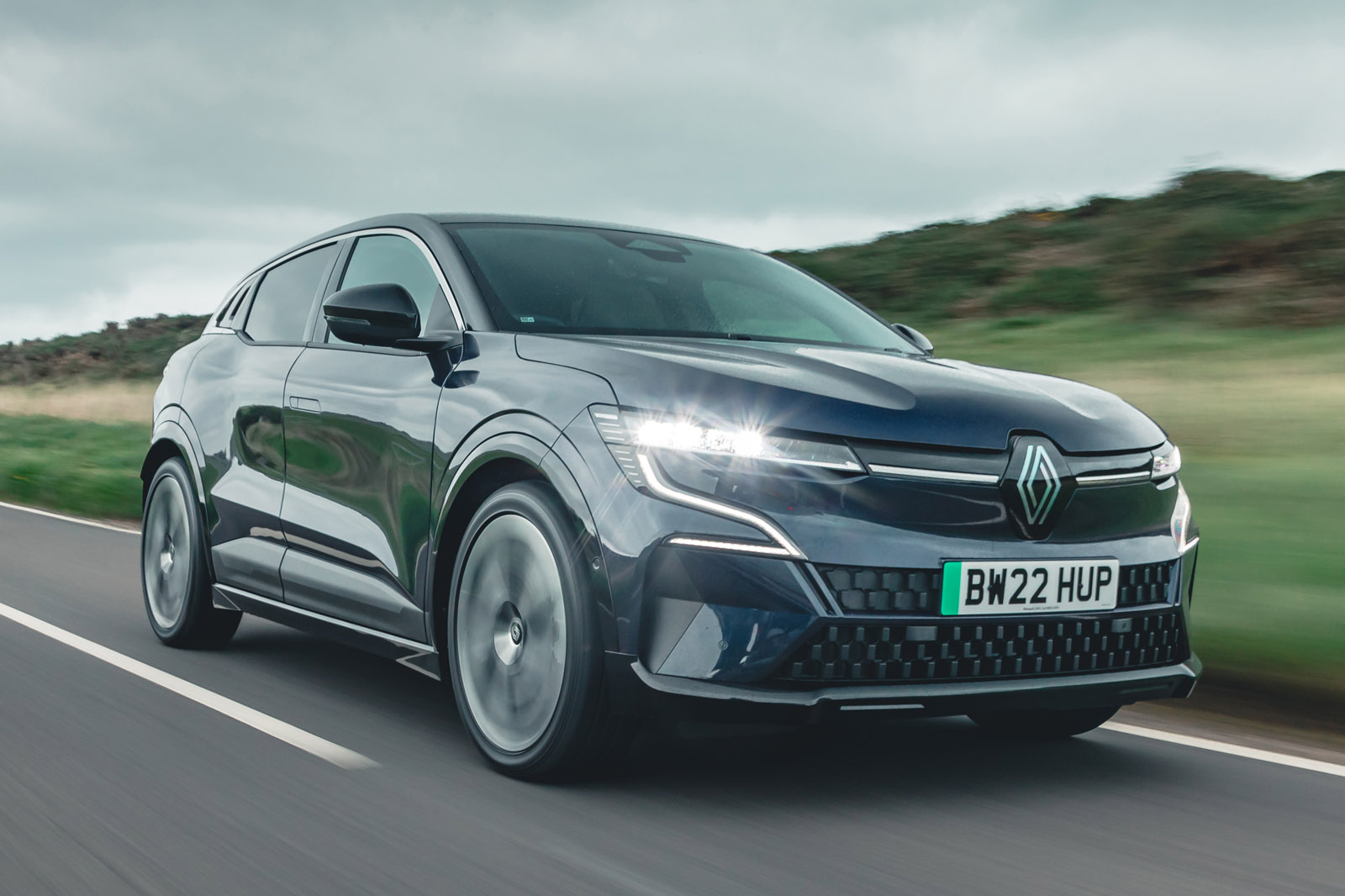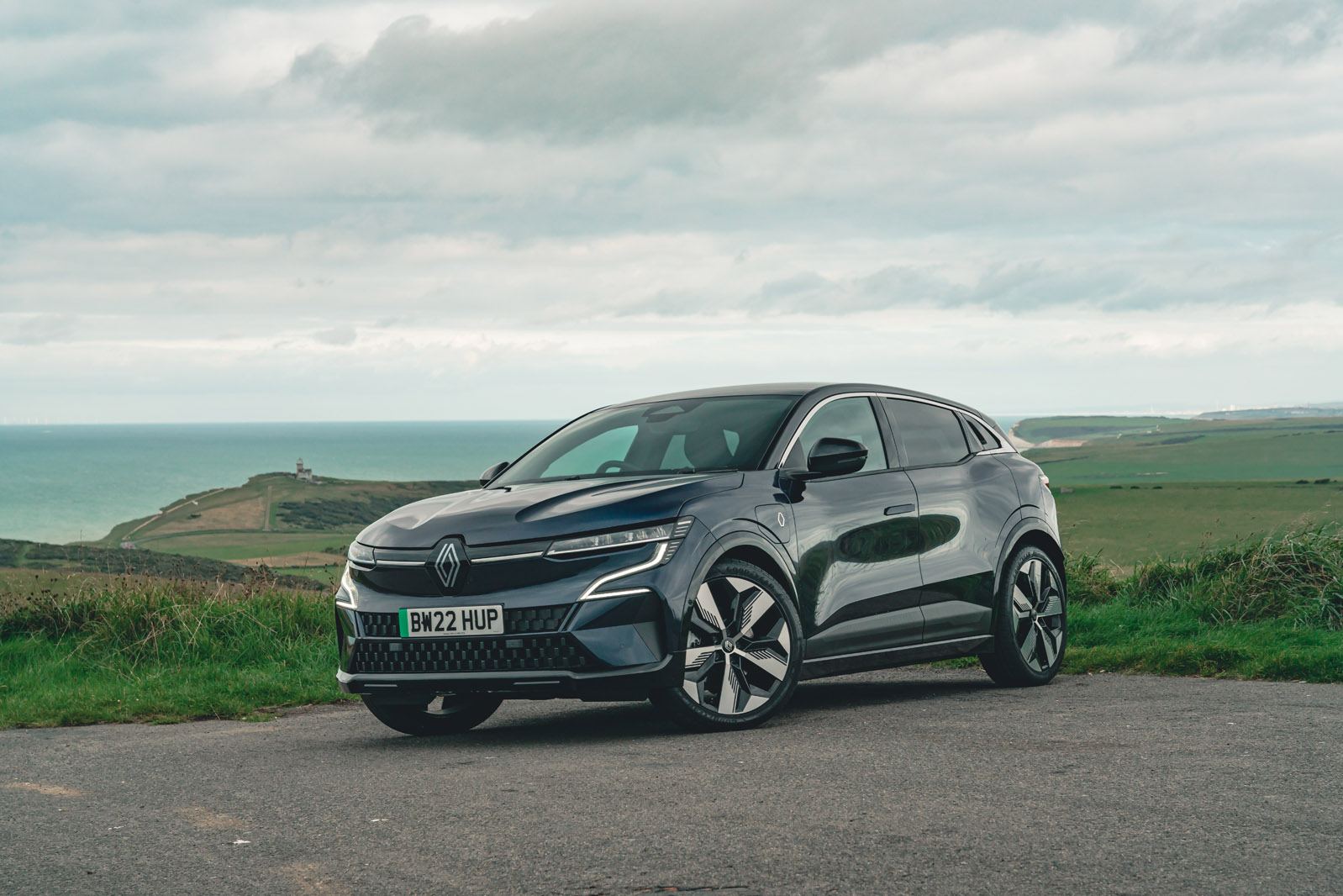Renault is swimming against the current with the front-drive layout of its new ground-up EV, so the big question is whether it has paid off in terms of interior space.
To some extent, it has. Despite being quite a lot smaller on the outside, the Mégane has a far bigger boot than the Cupra Born (440 litres plays 385 litres), and gets close to the Kia Niro EV’s (475 litres). It also beats the MG 4 (363 litres) because with the electric motor up front, the boot can be a lot deeper, with an additional 33-litre cubby under the floor for cable storage.
The boot’s depth is also a downside, because it makes the loading lip very high and creates a big step when the rear seats are folded. A variable-height floor could have solved this issue, but this isn’t even available as an option.
The rest of the passenger compartment isn’t quite as roomy as rivals’. Its 685mm of rear leg room can’t match the Cupra’s 750mm or the Kia’s 760mm, but is still close to average for a hatchback of this size. Head room is about par, too.
However, there are some serious caveats. The front seats are very comfortable and there is a lot of adjustment in the steering column, but there is no tilt function for the cushion, so taller drivers are likely to slide the seat back a long way, reducing rear leg room.
A bigger problem is the high beltline. It gives the Mégane its signature concept car looks, but it’s disastrous for visibility. The chunky C-pillar and the letterbox rear windscreen create a huge blindspot, and the rear passenger compartment feels quite claustrophobic. Blindspot monitoring only comes on the more expensive Techno trim, but when they are as big as they are in the Mégane, it ought to be standard.
Up front, you’re welcomed by a mostly well-considered driving environment. There is ample storage space in the centre console with dividers that can be moved to create more space or an additional cupholder. All UK Méganes get a 12.3in digital gauge cluster and a 9.0in infotainment screen that are neatly integrated in one big panel. A larger infotainment screen is available in other regions, but the new Google software works well with the smaller screen, which also puts the row of physical buttons for the climate control closer to hand.
The glossy finish makes the controls on the steering wheel look like the haptic type, but they are real buttons. The forest of column stalks also poses no problems.
It’s a little disappointing that the big digital gauge cluster doesn’t offer more customisation options. You can scroll through a handful of slick-looking configurations, but none of them makes especially good use of the available screen real estate. For instance, you can’t have the power/regen gauge and the map on screen at the same time.
The materials Renault has used are an oddly mixed bag. The fabric on the seats and dash gives a homely, lounge-like ambience, the synthetic leather on the steering wheel feels as good as the real thing and soft-touch material lines the door panels.
But the door cappings, where you might rest your arm, are rock hard, as is the dashboard’s ‘chin’ that contains the wireless charging pad for your phone. While the strip of Alcantara on the doors is nice enough, it doesn’t match anything else in the interior. Renault hasn’t exactly cheaped out on the interior, but one gets the impression the different interior designers weren’t talking to each other.
Infotainment
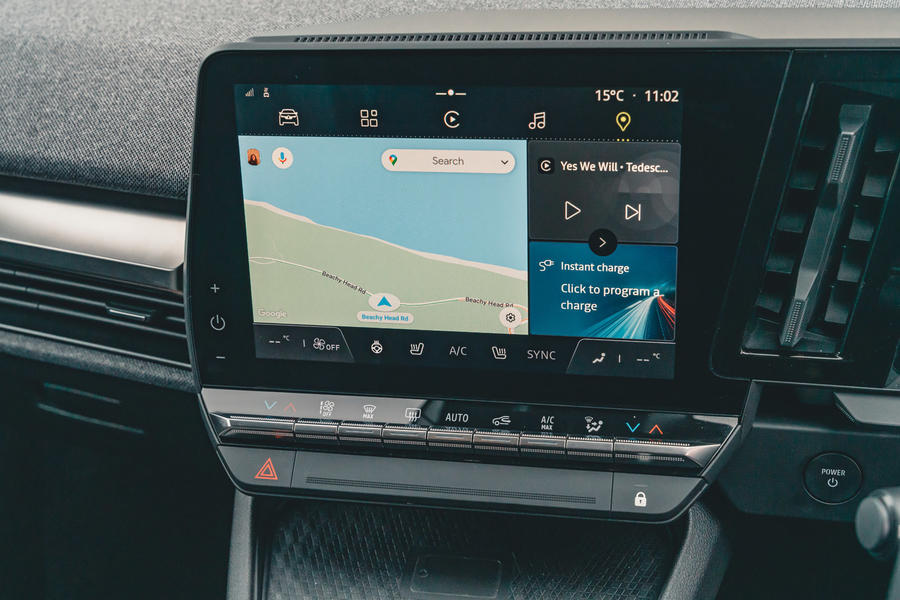
Most smartphones run Android, and who doesn’t have a Google account anyway? As a result, it makes sense to take the Google ecosystem into your car. That’s the main idea behind Android Automotive. It’s different from Android Auto smartphone mirroring (Renault’s system still gives you that option, as well as Apple CarPlay), because the whole system runs Google’s maps, voice assistant and more, and you can download additional apps like Spotify from an app store. At the same time, it all integrates with the car’s other systems, so Google Maps can show you how much charge you will have left at your destination and display directions in the gauge cluster.







![06 Renault Megane E Tech Electric RT 2022 charge flap logo] 06 Renault Megane E Tech Electric RT 2022 charge flap logo]](https://www.autocar.co.uk/sites/autocar.co.uk/files/styles/gallery_slide/public/06-renault-megane-e-tech-electric-rt-2022-charge-flap-logo.jpg?itok=0B9ieIFF)

















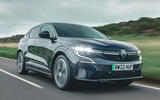




![06 Renault Megane E Tech Electric RT 2022 charge flap logo] 06 Renault Megane E Tech Electric RT 2022 charge flap logo]](https://www.autocar.co.uk/sites/autocar.co.uk/files/styles/flexslider_thumbnail/public/06-renault-megane-e-tech-electric-rt-2022-charge-flap-logo.jpg?itok=BqTLl1Eo)




















